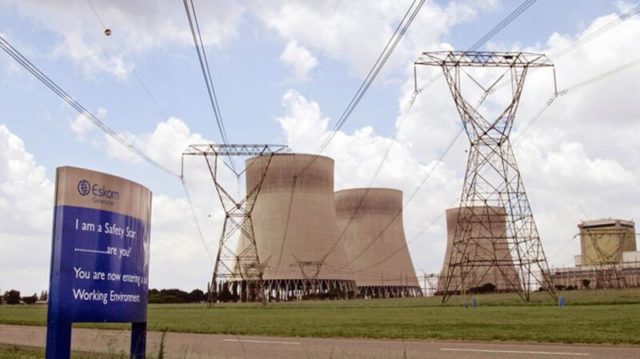So far, load shedding has been implemented for 32 days this year. This is six days more than the 26 days of load shedding during the same period last year.
POWER utility Eskom has pinned its hopes on returning the Koeberg and Kusile power station units to reduce pressure on the constrained power system, especially during the upcoming risky winter months.
During the next few weeks, Eskom will return to service two units at the Kusile power station, while Koeberg Unit 2 is expected to return by the end of June. These three large generation units will add about 2,500MW to the power system, Eskom said.
So far, load shedding has been implemented for 32 days this year. This is six days more than the 26 days of load shedding during the same period last year.
During Eskom’s presentation of the State of the System update, the power utility said it expected Medupi and Kusile to form the backbone of an evolving and greener power system that will be able to take South Africa into a more sustainable and dynamic energy industry.
However, the State of the System update on Wednesday revealed the national electricity grid remained constrained, with an elevated risk of load shedding over the winter period, particularly during the morning and evening peaks.
The power utility is hopeful the return of the Koeberg and Kusile units will significantly ease the demand pressure in time for the high winter demand. The Kusile units will add a combined 1,600MW to the power system, while Koeberg 2 will add another 920MW when it returns to service by the end of June.
Since January, Eskom has had to operate with only a single unit, or half the capacity, of Koeberg while the other unit has been undergoing a routine refuelling and other long-term operation activities.
In addition to Koeberg capacity being off-line for this period, Eskom has also had to cope without the 794MW normally contributed by the damaged Unit 4 of the Medupi power station. Together, these two units have been responsible for the implementation of almost two stages of load shedding, the power utility said.
Eskom chief operating officer Jan Oberholzer said the increase in the implementation of load shedding came on the back of higher levels of unplanned plant breakdowns, which averaged 26% of the fleet in the period ended March 2022. During this period the energy availability factor (EAF) averaged 62%.
“Planned maintenance is Eskom’s only weapon to try to bring reliability and predictability to a neglected plant,” Oberholzer said.
“In order to create space to effectively execute on the reliability maintenance recovery programme while fully powering a growing economy, South Africa desperately needs additional generation capacity of between 4,000MW and 6,000MW. With power stations reaching the end of their operational life, the gap will only increase. Bringing new capacity onto the grid as soon as possible is therefore critical and requires an SA Inc. approach,” he said.
Long-term solutions have also been implemented on coal handling to effectively address coal stock challenges which have long been a contributing factor to poor plant performance.
Oberholzer reported that the coal stock levels were healthy with an average of 38 days’ worth, excluding Medupi and Kusile.
He said that coal stocks would jump to an average 77 days’ worth of stock when those two were included.
Load shedding in Winter
Sharing the Winter Plan, Eskom’s group executive for transmission Segomoco Scheppers highlighted that the outlook showed an elevated risk of load shedding remained.
“One thing counting in favour of the country is the world-class and effective management by the transmission system operator, whose main task is to maintain the balance between supply and demand,” said Scheppers.
The system operator, however, will unfortunately continue to rely on the usage of the open-cycle gas turbines, which burn expensive diesel to mitigate the impact of load shedding.
Eskom earlier announced the implementation of Stage 2 load shedding from 5pm to 10pm on Wednesday owing to a shortage of generation capacity during the evening peak.
On Wednesday morning, two generation units at the Hendrina power station and one at the Matimba power station were taken off-line for repairs. One generation unit at the Arnot power station was returned to service.
A generation unit each at Kusile and Tutuka power stations are expected to return to service this afternoon.
The power utility urged South Africans to continue using electricity sparingly, especially between 5am and 9am and again between 4pm and 10pm.








